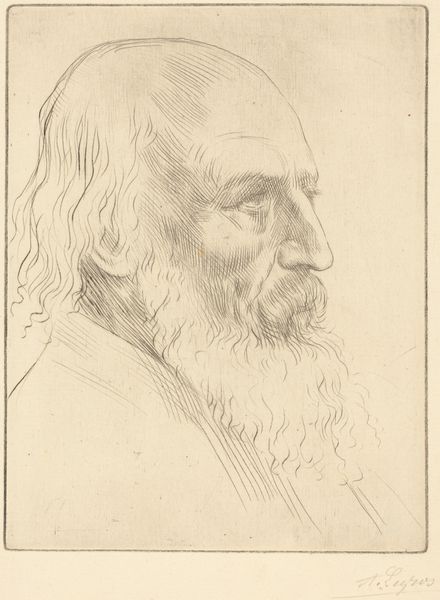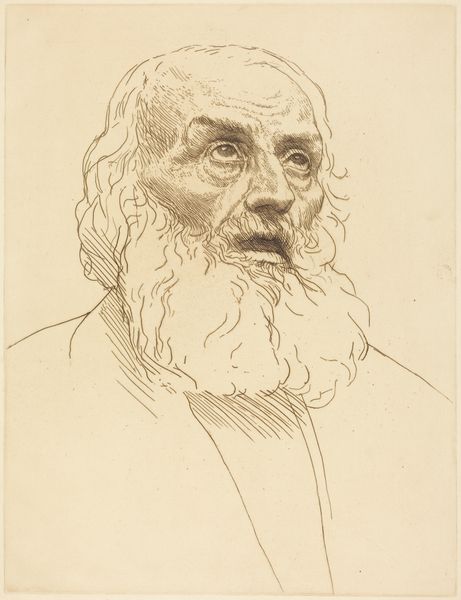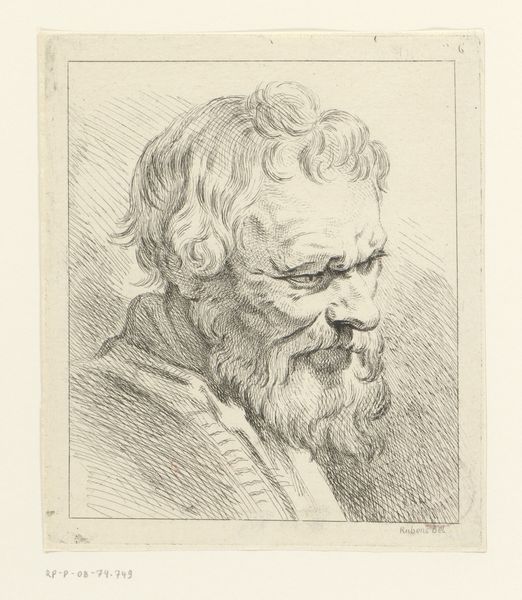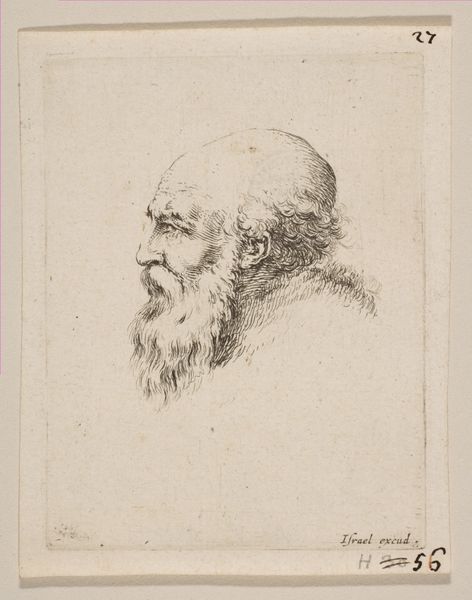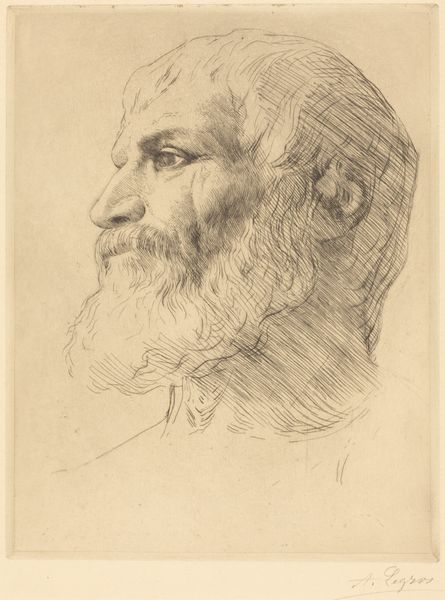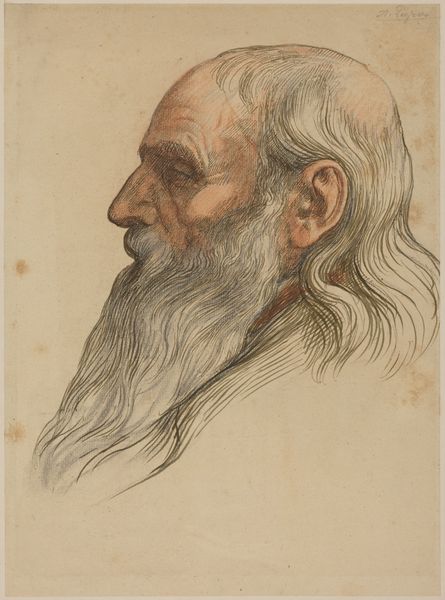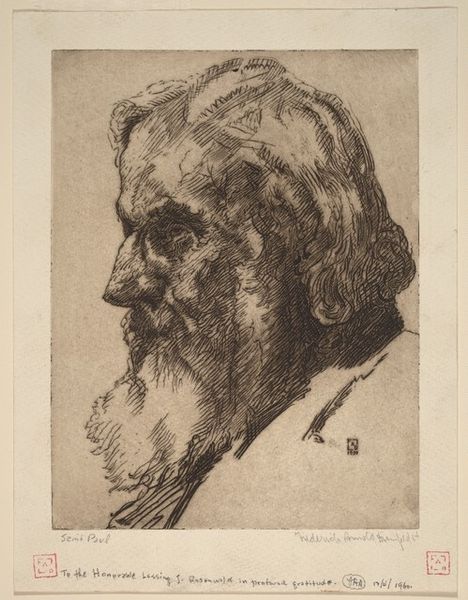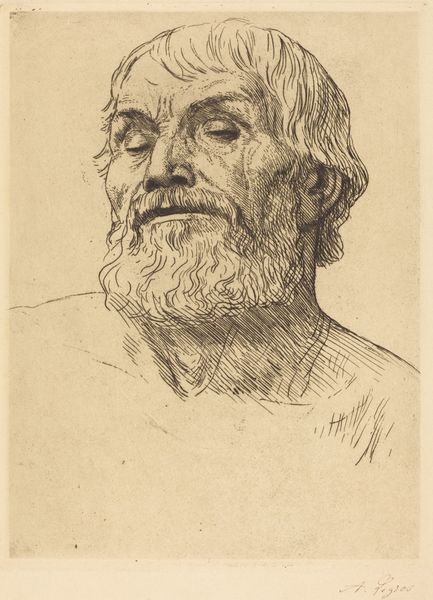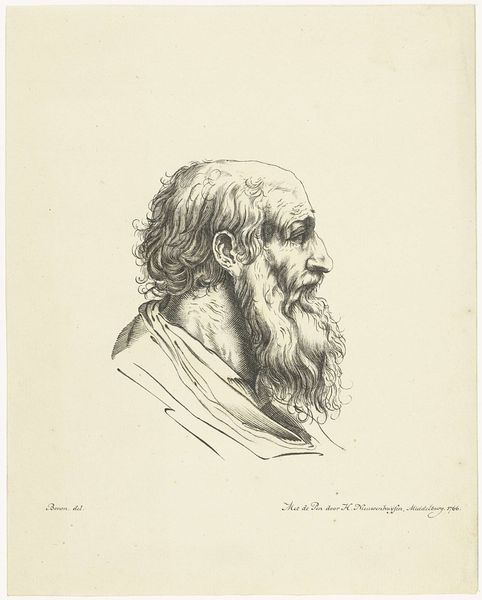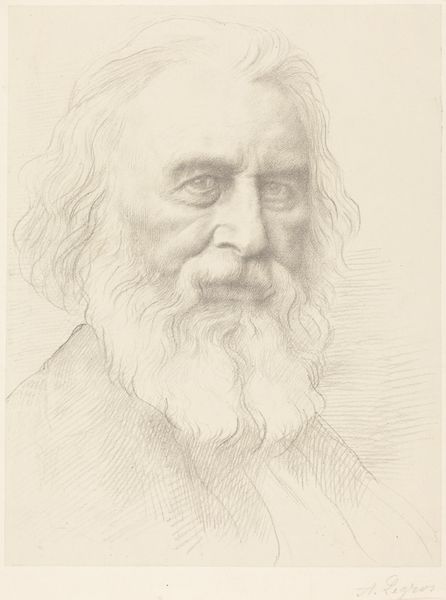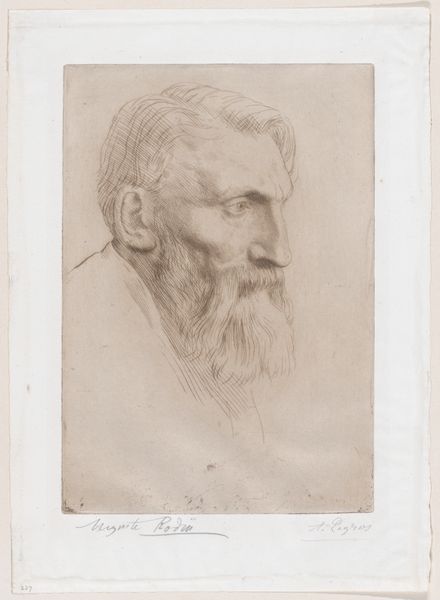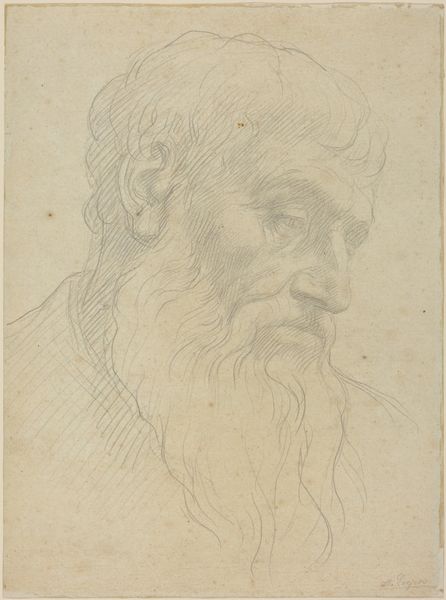
print, etching
#
portrait
# print
#
etching
#
portrait drawing
#
history-painting
#
realism
Copyright: National Gallery of Art: CC0 1.0
Editor: Here we have an etching by Alphonse Legros entitled "Tolstoy." I'm struck by the intensity of his gaze and the incredible detail rendered through such delicate lines. It feels so intimate, almost like we're catching Tolstoy in a private moment of contemplation. What stands out to you? Curator: You know, when I look at this piece, I'm instantly transported to a snow-dusted Russian estate. I can almost smell the woodsmoke. Legros really captures Tolstoy's almost biblical presence, doesn’t he? That weighty beard, those eyes that have seen… well, *War and Peace*. It’s like gazing upon a titan grappling with the very soul of humanity, and it reminds me of my own anxieties when writing. The sparse lines amplify this profound sense of isolation, don't you think? Does it feel like that to you? Editor: Yes, I agree, and that contrast between the immensity of his legacy and the solitude captured here is really powerful. How did Legros achieve that feeling of texture and depth with just etching? Curator: Ah, the magic of the medium! Think of it, patiently layering those tiny, incised lines to build form. It's almost meditative. And the restraint! He leaves so much unsaid, so much open to our interpretation. It makes you want to fill in the blanks, doesn't it? But careful now, too much filling and the portrait might become about you! Ha! Editor: It certainly does invite you to reflect! I didn't realize how much information you can convey through implication rather than explicit detail. Curator: Absolutely. And sometimes, it is in those very absences that a portrait speaks volumes about both the subject and the artist's profound relationship to it. Food for thought, eh? Editor: Definitely. This has given me a completely different appreciation for portraiture and the art of etching. Thanks!
Comments
No comments
Be the first to comment and join the conversation on the ultimate creative platform.
